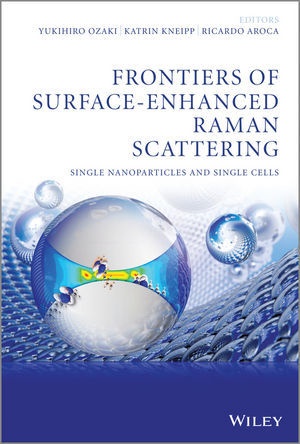Mehr lesen
Informationen zum Autor EDITORS YUKIHIRO OZAKI , School of Science & Technology, Kwansei Gakuin University, Japan KATRIN KNEIPP , Department of Physics, Technical University of Denmark, Denmark RICARDO AROCA , Department of Chemistry & Biochemistry, University of Windsor, Canada Klappentext A comprehensive presentation of Surface-Enhanced Raman Scattering (SERS) theory, substrate fabrication, applications of SERS to biosystems, chemical analysis, sensing and fundamental innovation through experimentation. Written by internationally recognized editors and contributors.Relevant to all those within the scientific community dealing with Raman Spectroscopy, i.e. physicists, chemists, biologists, material scientists, physicians and biomedical scientists.SERS applications are widely expanding and the technology is now used in the field of nanotechnologies, applications to biosystems, nonosensors, nanoimaging and nanoscience. Zusammenfassung A comprehensive presentation of Surface-Enhanced Raman Scattering (SERS) theory, substrate fabrication, applications of SERS to biosystems, chemical analysis, sensing and fundamental innovation through experimentation. Written by internationally recognized editors and contributors. Inhaltsverzeichnis List of Contributors xi Preface xv 1. Calculation of Surface-Enhanced Raman Spectra Including Orientational and Stokes Effects Using TDDFT/Mie Theory QM/ED Method 1 George C. Schatz and Nicholas A. Valley 1.1 Introduction: Combined Quantum Mechanics/Electrodynamics Methods 1 1.2 Computational Details 3 1.3 Summary of Model Systems 4 1.4 Azimuthal Averaging 5 1.5 SERS of Pyridine: Models G, A, B, S, and V 6 1.6 Orientation Effects in SERS of Phthalocyanines 11 1.7 Two Particle QM/ED Calculations 13 1.8 Summary 15 Acknowledgment 16 References 16 2. Non-resonant SERS Using the Hottest Hot Spots of Plasmonic Nanoaggregates 19 Katrin Kneipp and Harald Kneipp 2.1 Introduction 19 2.2 Aggregates of Silver and Gold Nanoparticles and Their Hot Spots 21 2.2.1 Evaluation of Plasmonic Nanoaggregates by Vibrational Pumping due to a Non-resonant SERS Process 21 2.2.2 Probing Plasmonic Nanoaggregates by Electron Energy Loss Spectroscopy 24 2.2.3 Probing Local Fields in Hot Spots by SERS and SEHRS 25 2.3 SERS Using Hot Silver Nanoaggregates and Non-resonant NIR Excitation 26 2.3.1 SERS Signal vs. Concentration of the Target Molecule 26 2.3.2 Spectroscopic Potential of Non-resonant SERS Using the Hottest Hot Spots 30 2.4 Summary and Conclusions 31 References 32 3. Effect of Nanoparticle Symmetry on Plasmonic Fields: Implications for Single-Molecule Raman Scattering 37 Lev Chuntonov and Gilad Haran 3.1 Introduction 37 3.2 Methodology 38 3.3 Plasmon Mode Structure of Nanoparticle Clusters 39 3.3.1 Dimers 39 3.3.2 Trimers 40 3.4 Effect of Plasmon Modes on SMSERS 47 3.4.1 Effect of the Spectral Lineshape 47 3.4.2 Effect of Multiple Normal Modes 49 3.5 Conclusions 54 Acknowledgment 54 References 54 4. Experimental Demonstration of Electromagnetic Mechanism of SERS and Quantitative Analysis of SERS Fluctuation Based on the Mechanism 59 Tamitake Itoh 4.1 Experimental Demonstration of the EM Mechanism of SERS 59 4.1.1 Introduction 59 4.1.2 Observations of the EM Mechanism in SERS Spectral Variations 60 4.1.3 Observations of the EM Mechanism in the Refractive Index Dependence of SERS Spectra 62 4.1.4 Quantitative Evaluation of the EM Mechanism of SERS 64 4.1.5 Summary 72 4.2 Quantitative Analysis of SERS Fluctuation Based on the EM Mechanism 72

